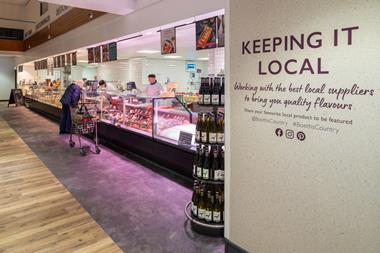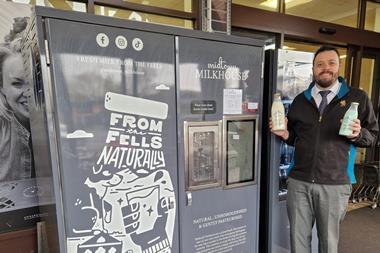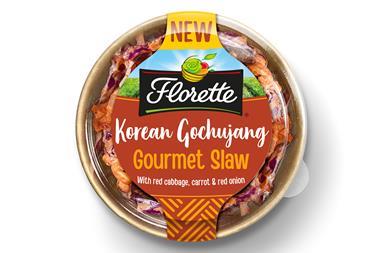Honey continues to grow in popularity, thanks mostly to attention-grabbing headlines linked to its health benefits
The growth of honey continues to outperform the rest of the spreads category and dramatic headlines such as ‘honey could be superbug cure’ in the national press have heightened people’s perception of honey as a superfood.
A report in The Daily Telegraph on November 1 last year added a further boost to the product, with a story that linked the antibacterial potency of Manuka honey from New Zealand to the inhibition of growth of the bug that causes MRSA.
As a result, Manuka honey is one of the success stories in the honey category. Rowse Honey launched Manuka Active 10+ last year and it is already listed in Booths, Tesco, Waitrose, Morrisons, the Co-operative Group and Budgens. Stuart Bailey, Rowse Honey MD, predicts retail sales of Rowse Manuka will top £2m this year.
He says: “Manuka wasn’t on the radar and suddenly it was.
One article was published and then there was a torrent of national press coverage, which has led to increased sales.”
Over the past six months, budget honeys have also reappeared in major retailers after an absence of more than three years following the ban on Chinese honey and worldwide shortages in 2002.
But what impact it will have on the sector remains to be seen.
Says Bailey: “The next six months will tell us what effect value honeys will have. While some consumers will trade down to the lowest price, this also provides a lower cost entry point, which will encourage more consumers to buy honey. My view is that value honeys will take 5% of the honey market.”
Julian Dunn, general manager for convenience and spreads at Premier Foods, which owns the Gale’s honey brand, doesn’t believe that the reintroduction of Chinese honey in the UK is having much effect on the UK market. “Essentially the total exports of honey from China are virtually unchanged,” he says.
Michael Simpson-Jones, buyer for hot beverages and breakfast spreads at Waitrose, adds: “Chinese honey coming back into the market hasn’t resulted in a drastic movement of retail prices.”
At the end of August last year, UK import figures showed that 564 tonnes of Chinese honey were imported, according to Bailey. “This is only 4% of the total import, but it will increase as Chinese is incorporated into more of the cheaper blends. I would expect Chinese to increase to 10% of total honey imports within the next year.”
Research from Premier Foods shows that premiumisation is a key growth trend in the honey category and, in response to this, Gale’s has launched Everyday better blended Speciality honey and a speciality honey range in Acacia and Clover varieties.
Judith Sinclair-Smith, category marketing manager at The Co-operative Group, sees the volume of speciality honey remaining stable as “honey devotees will remain loyal to the superior qualities of their favourite speciality honeys”.
The growth of honey continues to outperform the rest of the spreads category and dramatic headlines such as ‘honey could be superbug cure’ in the national press have heightened people’s perception of honey as a superfood.
A report in The Daily Telegraph on November 1 last year added a further boost to the product, with a story that linked the antibacterial potency of Manuka honey from New Zealand to the inhibition of growth of the bug that causes MRSA.
As a result, Manuka honey is one of the success stories in the honey category. Rowse Honey launched Manuka Active 10+ last year and it is already listed in Booths, Tesco, Waitrose, Morrisons, the Co-operative Group and Budgens. Stuart Bailey, Rowse Honey MD, predicts retail sales of Rowse Manuka will top £2m this year.
He says: “Manuka wasn’t on the radar and suddenly it was.
One article was published and then there was a torrent of national press coverage, which has led to increased sales.”
Over the past six months, budget honeys have also reappeared in major retailers after an absence of more than three years following the ban on Chinese honey and worldwide shortages in 2002.
But what impact it will have on the sector remains to be seen.
Says Bailey: “The next six months will tell us what effect value honeys will have. While some consumers will trade down to the lowest price, this also provides a lower cost entry point, which will encourage more consumers to buy honey. My view is that value honeys will take 5% of the honey market.”
Julian Dunn, general manager for convenience and spreads at Premier Foods, which owns the Gale’s honey brand, doesn’t believe that the reintroduction of Chinese honey in the UK is having much effect on the UK market. “Essentially the total exports of honey from China are virtually unchanged,” he says.
Michael Simpson-Jones, buyer for hot beverages and breakfast spreads at Waitrose, adds: “Chinese honey coming back into the market hasn’t resulted in a drastic movement of retail prices.”
At the end of August last year, UK import figures showed that 564 tonnes of Chinese honey were imported, according to Bailey. “This is only 4% of the total import, but it will increase as Chinese is incorporated into more of the cheaper blends. I would expect Chinese to increase to 10% of total honey imports within the next year.”
Research from Premier Foods shows that premiumisation is a key growth trend in the honey category and, in response to this, Gale’s has launched Everyday better blended Speciality honey and a speciality honey range in Acacia and Clover varieties.
Judith Sinclair-Smith, category marketing manager at The Co-operative Group, sees the volume of speciality honey remaining stable as “honey devotees will remain loyal to the superior qualities of their favourite speciality honeys”.














No comments yet